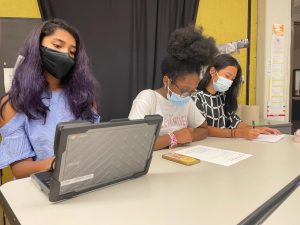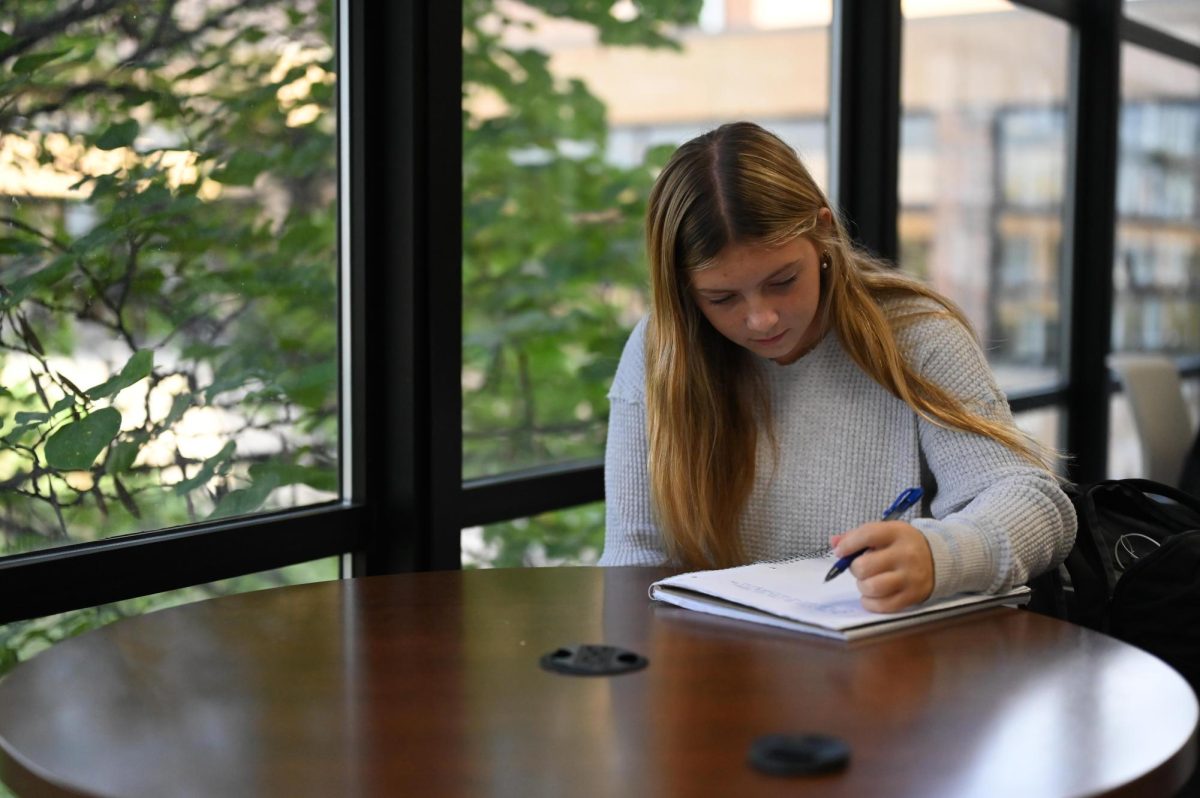Digital
October 5, 2021
Digitalization of assignments has become a quick process over the past years. Assignments rapidly turned from paper, to computer labs to constantly accessible personal computers.
Technologies such as wide-angle cameras allowed German teacher Christie Staszcuk to see her whole classroom while teaching from another school. Students from the opposing schools see the other class and lessons on their Smart Board.
“Connecting the students in both schools is definitely a goal. The fact that the schools are rivals at times adds an extra layer of challenge,” Staszcuk said. “On the positive side, digital assignments allow students to personalize their work more creatively and efficiently.”
This digitalization became useful last year as the whole school transitioned to remote learning. Staszcuk was forced to adapt to online learning, teaching students at two different schools.
“On the day of the walk out at Central, I had classes with only a handful of Central students, but full classes at West. Both groups needed my attention, but in different ways,” Staszcuk said.
The digital learning structure allowed teachers to tailor lessons for each student’s learning style. Specific lessons got categorized into online folders for convenience, which senior Maura Collins found to be helpful.
“Digital assignments are a little bit easier to keep track of for me because I don’t have to worry about losing the paper. It’s also easier to keep track of my deadlines and make changes to the document,” Collins said.
Collins also found that printing wastes the blank sides of paper. Because of printed prompts, there’s only a set amount of space for the information. Digitally, students can continue to add lines to documents and write as much or as little as needed.
“[Technological waste is recyclable], it just takes a large amount of water to do. For paper you can try to recycle it, but it doesn’t really break down,” Collins said. “In both cases, neither of them really get recycled or reused but with technology there’s a chance to repair it.”
Digital assignments and technologies provided opportunities for students to connect throughout the district. Oftentimes virtual students had online classrooms consisting of students from multiple schools, allowing for ideas to be shared outside of the student’s home school. Digital technologies changed the way students and teachers form connections with one another.
“While all virtual classes work for some people, I think many of us felt disconnected last year. My favorite part of being a teacher is the relationships that I form with my students. I really missed that connection with my virtual students last year. Accepting a new teacher is often hard for German students anyway, so I’m very glad that I have the opportunity to get to know my new students in both schools,” Staszcuk said.



![Focused on providing exceptional service, sophomore Darsh Mahapatra carefully cleans the door of a customer’s car. Mahapatra has always believed his customers deserve nothing less than the best. “[If] they’re trusting us with their car and our service, then I am convinced that they deserve our 100 percent effort and beyond,” Mahapatra said.](https://pwestpathfinder.com/wp-content/uploads/2025/10/DSC_0018-1200x800.jpg)
![Senior Dhiya Prasanna examines a bottle of Tylenol. Prasanna has observed data in science labs and in real life. “[I] advise the public not to just look or search for information that supports your argument, but search for information that doesn't support it,” Prasanna said.](https://pwestpathfinder.com/wp-content/uploads/2025/10/DSC_0073-2-1200x800.jpg)